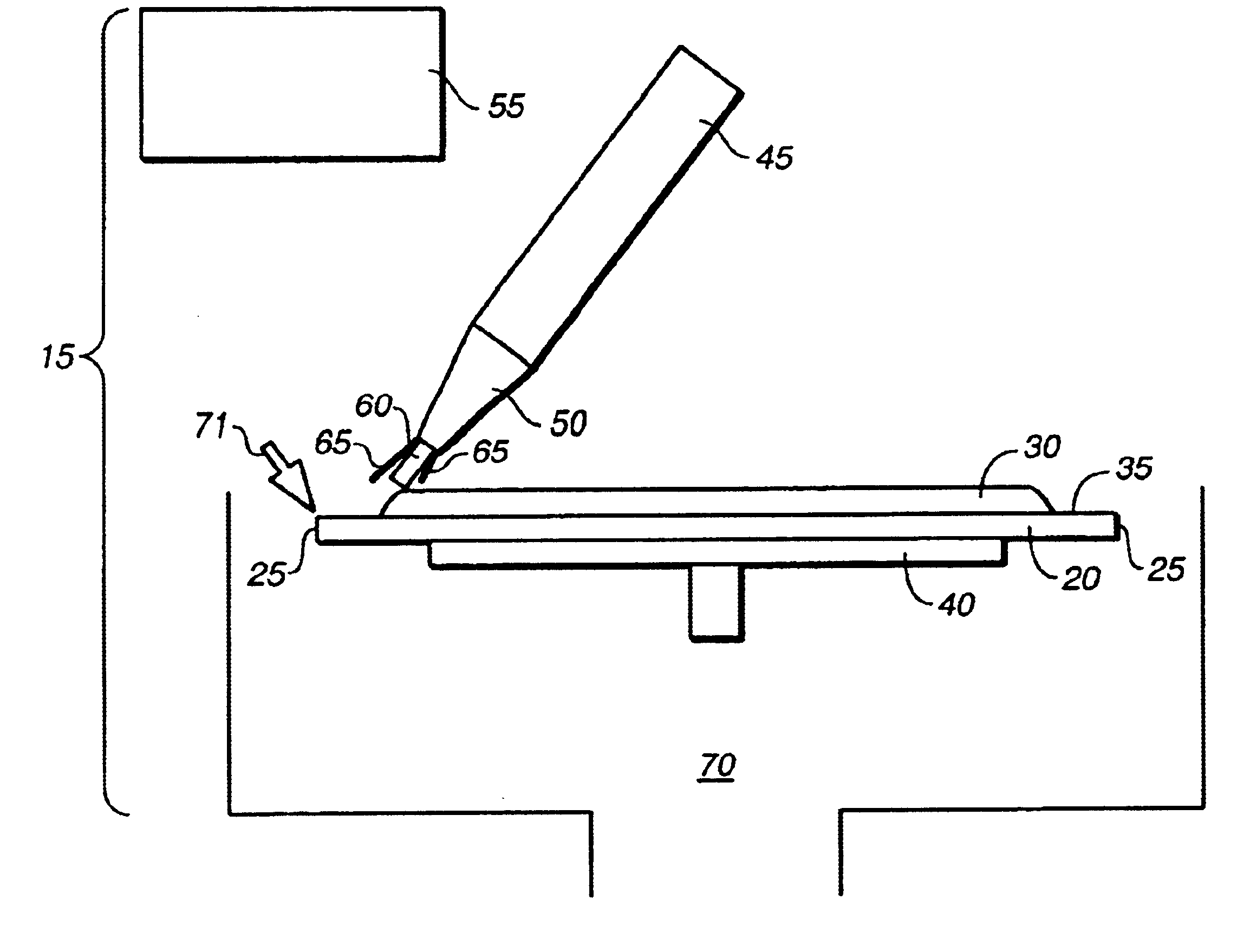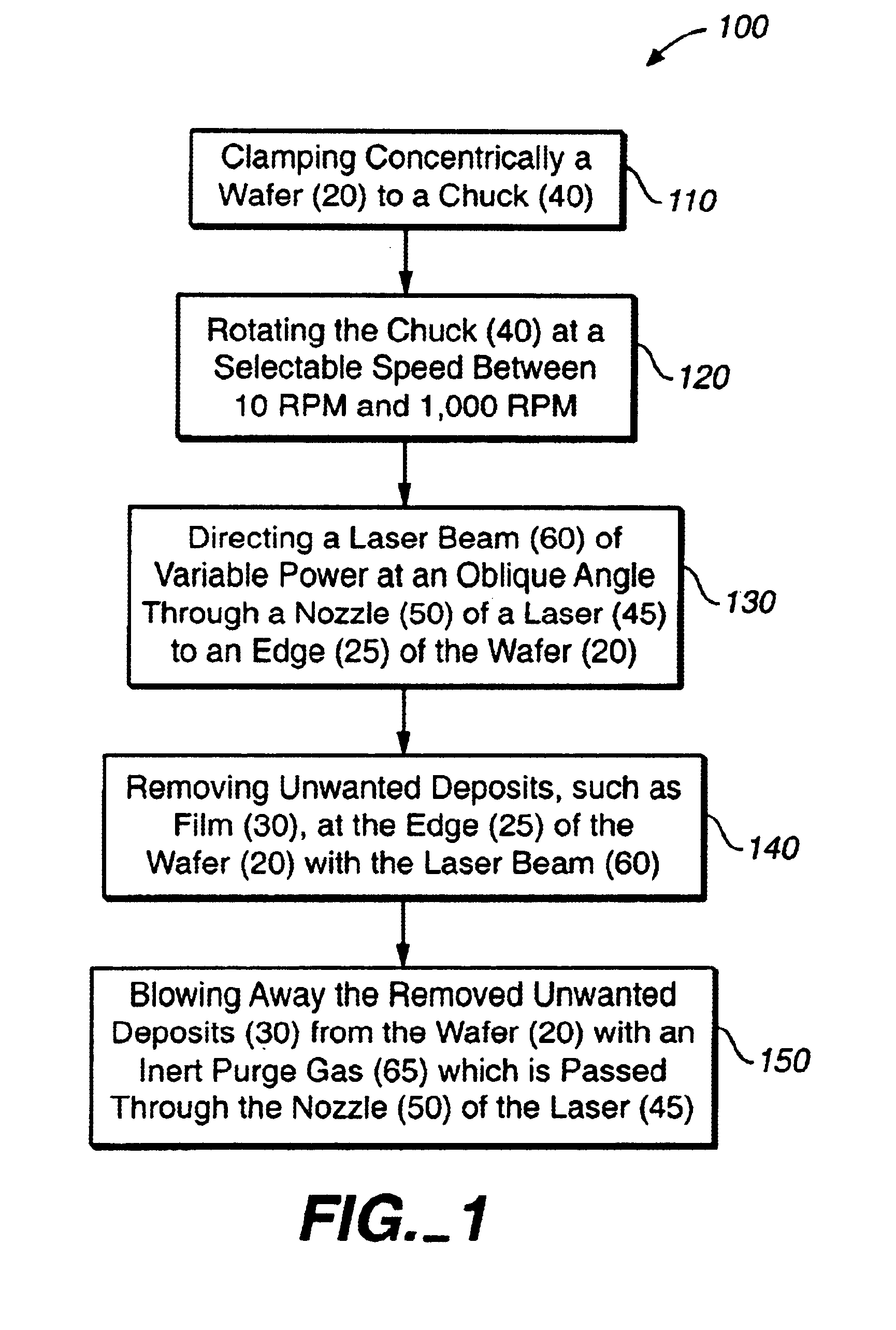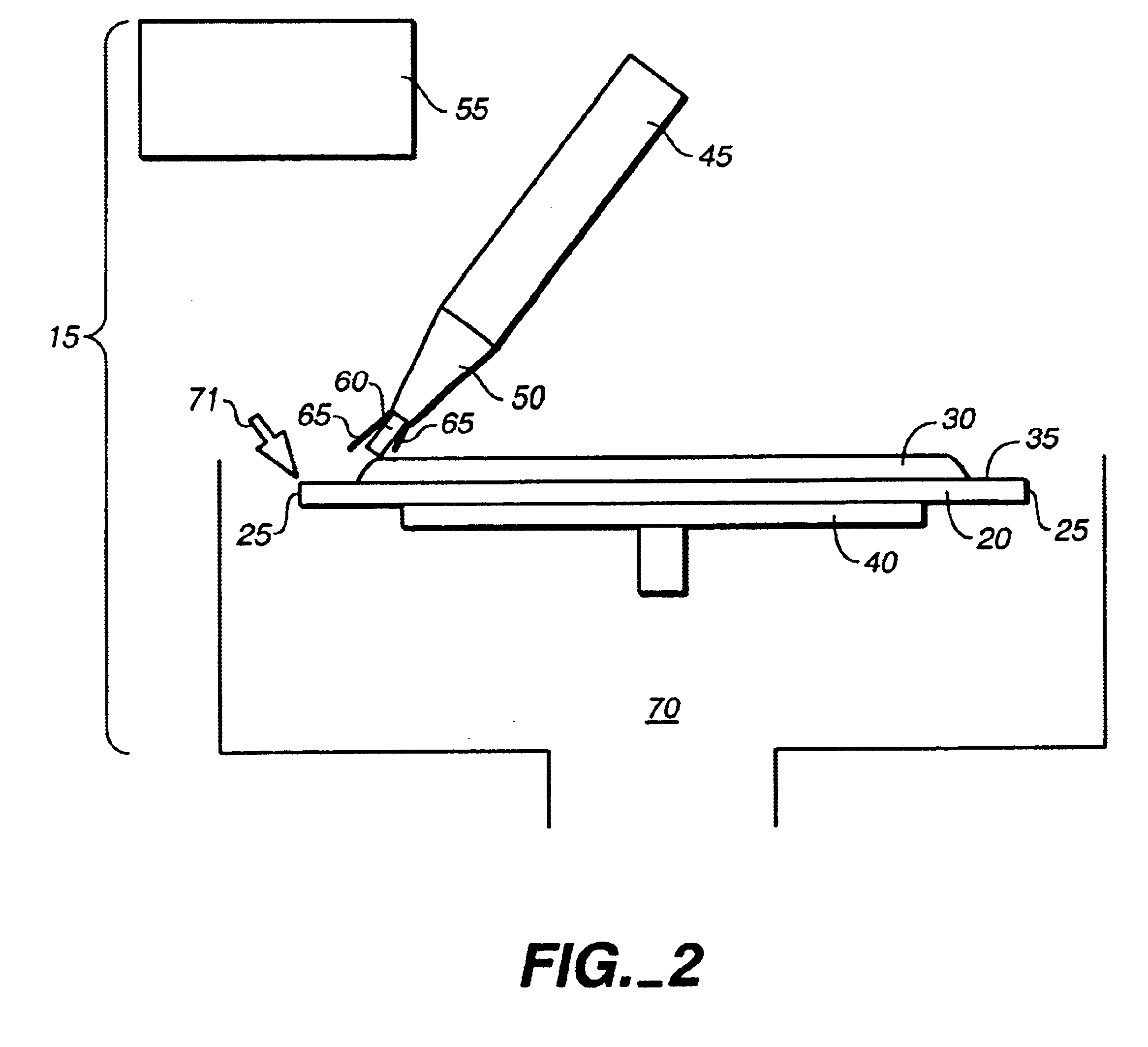Method to use a laser to perform the edge clean operation on a semiconductor wafer
a technology of laser and semiconductor wafer, which is applied in the direction of cleaning using liquids, manufacturing tools, chemistry apparatus and processes, etc., can solve the problems of reducing the yield and loss of dies, peeling of edge films, and related defects of edges, so as to prevent slag buildup on other parts, accurate wafer alignment system, and accurate cleaning of the edge of the wafer
- Summary
- Abstract
- Description
- Claims
- Application Information
AI Technical Summary
Benefits of technology
Problems solved by technology
Method used
Image
Examples
Embodiment Construction
While this invention may be susceptible to embodiment in different forms, there is shown in the drawings and will be described herein in detail, a specific embodiment with the understanding that the present disclosure is to be considered an exemplification of the principles of the invention, and is not intended to limit the invention to that as illustrated and described herein.
The present invention provides a method 100 of performing an edge clean operation on a semiconductor wafer 20, which is illustrated in FIG. 1. The system 15 used for performing the method 100 is illustrated in FIG. 2.
As illustrated in FIG. 2, the system 15 used for performing the method 100 includes the wafer 20 having an edge 25. Film 30 is attached to a top surface 35 of the wafer 20. The system 15 further includes a chuck 40, a laser 45 having a nozzle 50, and a video monitoring system 55. The laser 45 is capable of emitting a laser beam 60 through the nozzle 50. An inert purge gas 65 is also emitted throug...
PUM
| Property | Measurement | Unit |
|---|---|---|
| oblique angle | aaaaa | aaaaa |
| speed | aaaaa | aaaaa |
| power | aaaaa | aaaaa |
Abstract
Description
Claims
Application Information
 Login to View More
Login to View More - R&D
- Intellectual Property
- Life Sciences
- Materials
- Tech Scout
- Unparalleled Data Quality
- Higher Quality Content
- 60% Fewer Hallucinations
Browse by: Latest US Patents, China's latest patents, Technical Efficacy Thesaurus, Application Domain, Technology Topic, Popular Technical Reports.
© 2025 PatSnap. All rights reserved.Legal|Privacy policy|Modern Slavery Act Transparency Statement|Sitemap|About US| Contact US: help@patsnap.com



